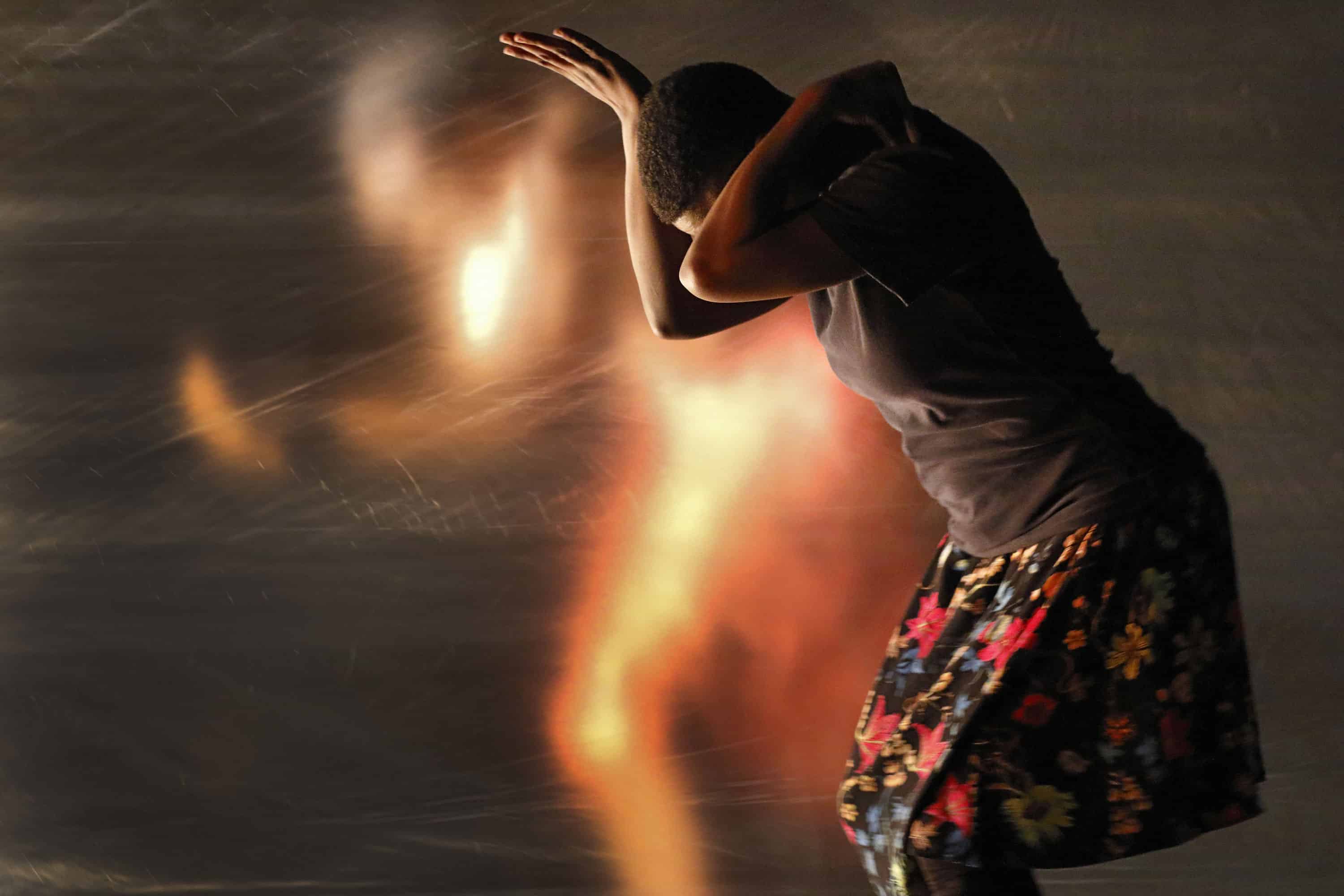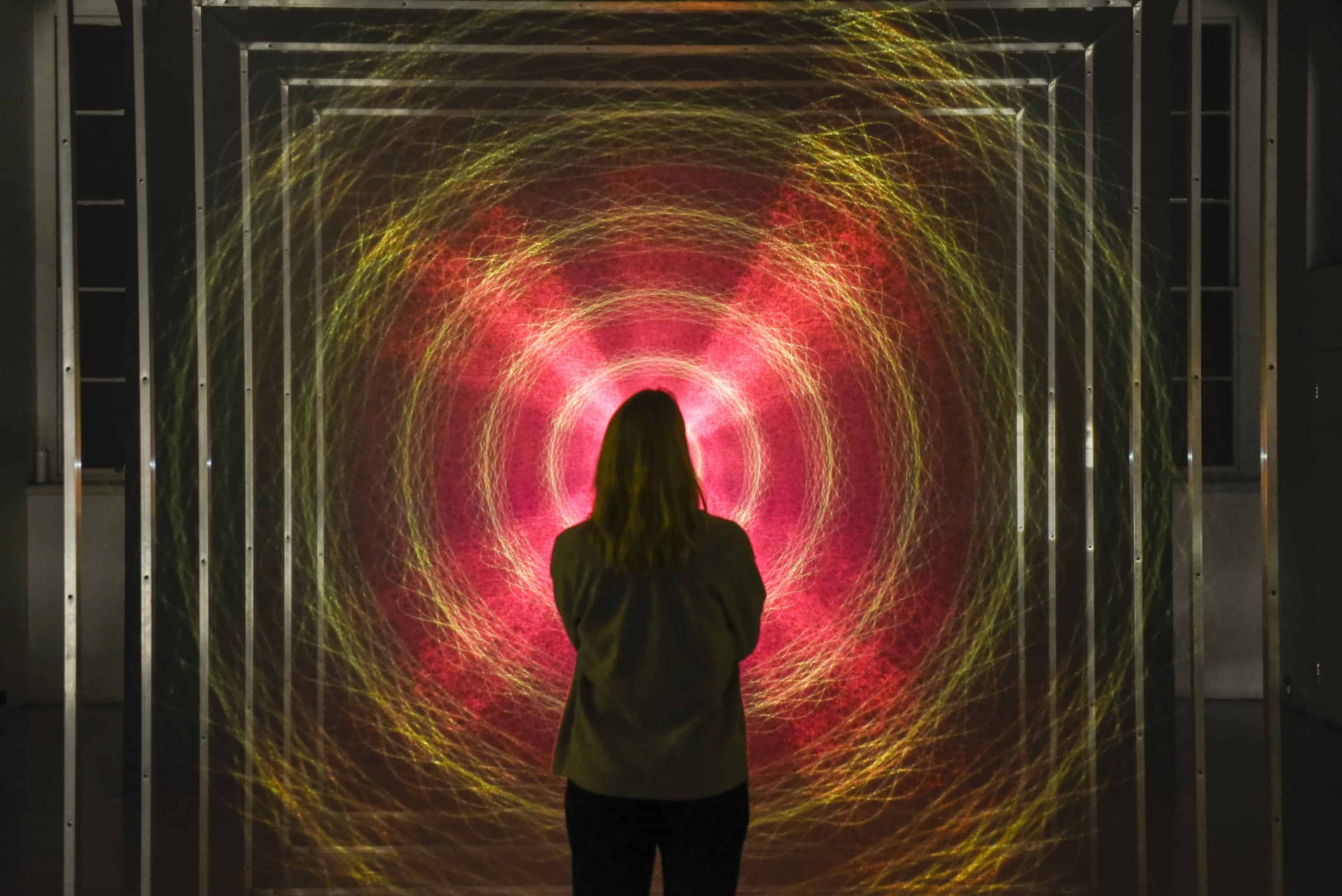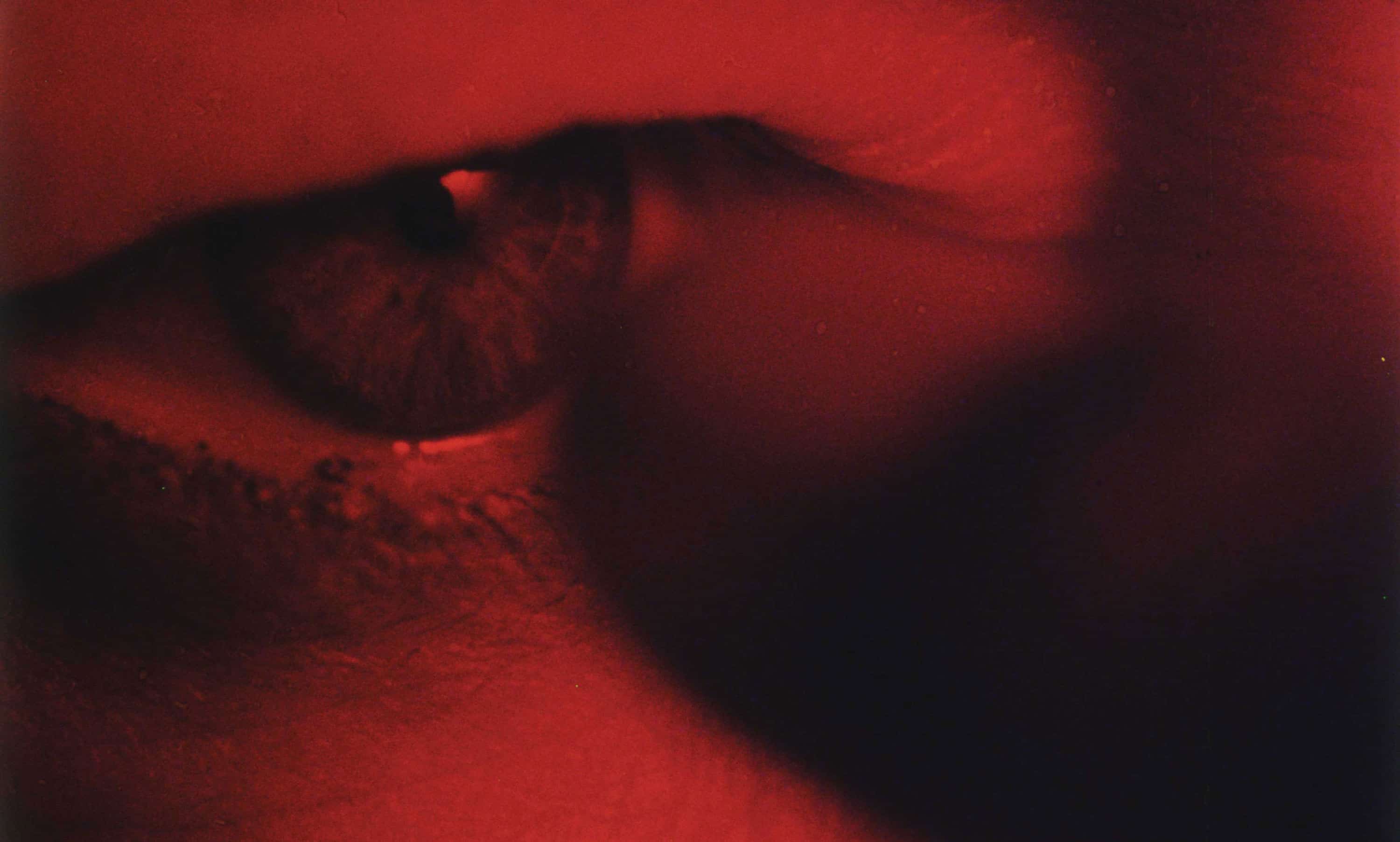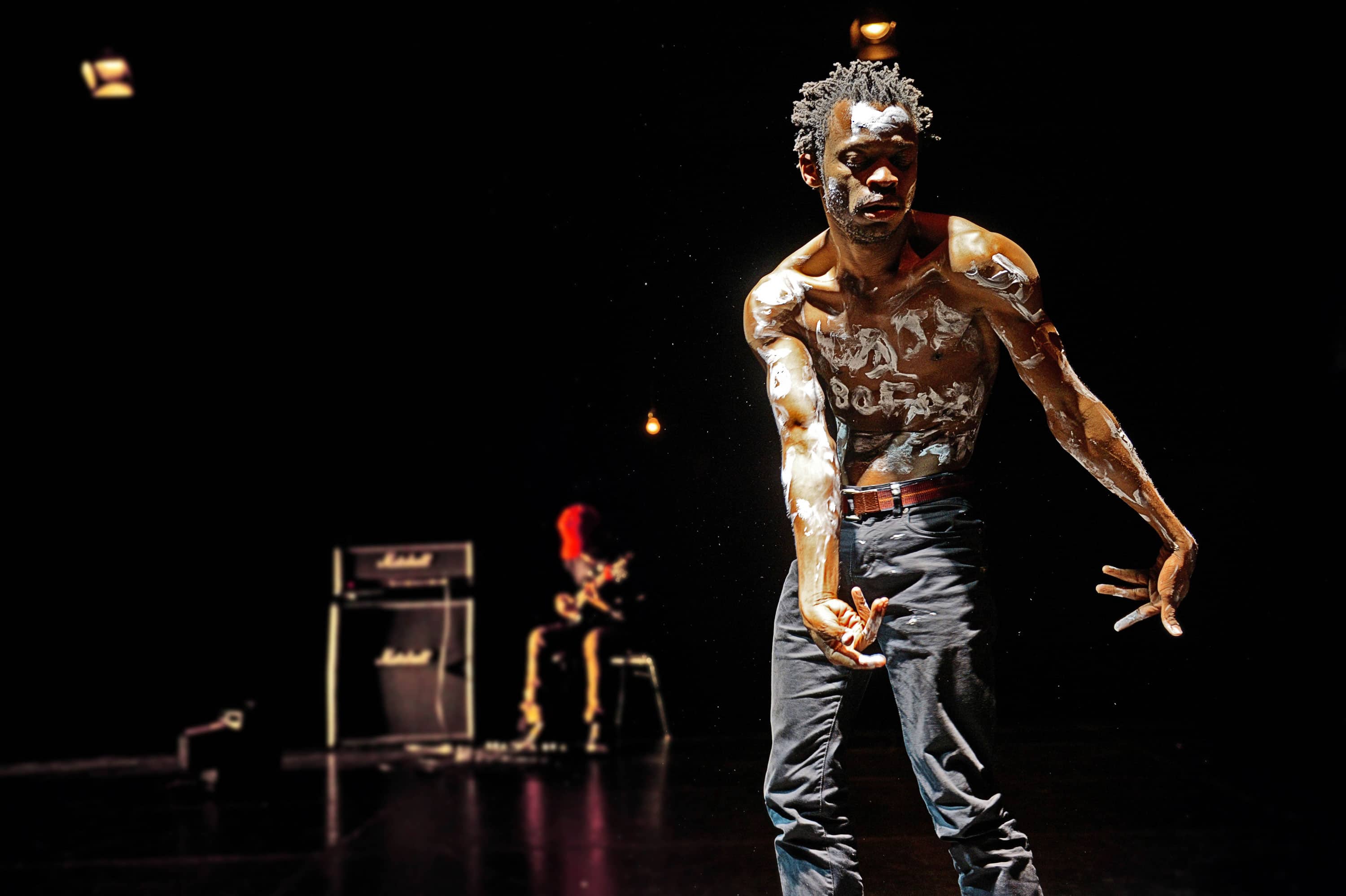
Okwui Okpokwasili Poor People’s TV Room 2017. Performance view, New York Live Arts, April 18, 2017. Photo © Paul B. Goode
Winter makes us think about our bodies. It’s the time of wrapping up and keeping warm but also feeling cold and shivering. Even though London has been treated mildly so far (despite a couple of storms), this winter season has brought a number of visceral experiences to the art scene. Take a closer look at a handy collection of remarkable performances and exhibitions that have already taken place and which experiences you can still immerse yourself in to satisfy your creative cravings this winter.

London International Mime Festival 2020, Peeping Tom, Kind (Child), image credit Olympe Tits
Peeping Tom: Child (Kind)
Once again the London International Mime Festival brought an exciting staple of genre-defying theatre and dance programme to the UK. Peeping Tom, the Olivier Award-winning Belgian theatre company, returned to the Barbican with Child (Kind). Following productions of Mother and Father, Gabriela Carrizo and Franck Chartier, the duo behind the concept and direction, presented us Child – the final part of its family-themed trilogy. Between dance and physical theatre, it blends unsettling imagery with unusual choreography, epitomising the extraordinary reach of contemporary visual performance.
Focusing on a child living in the dark woodland at the foot of menacing cliffs, the production explores existential issues. That little girl (played by mesmerising Eurudike De Beul who is over 50yo) tries to organise her world through fantasty, role-playing and immigrations in order to take control of perplexing situations and their dynamics. Peeping Tom ponders over questions of paramount importance: what happens in traumatic situations? How do children handle their quest for truth? The child uses a wide variety of tools to build her own world and answer existential issues without any of the parents present. The environment she functions in is surreal, absurd, and gruesome but at the same time it’s shockingly similar to ours, full of peculiar adult preoccupations and absurdity of enforced social interactions we come across on a daily basis.
For Peeping Tom, the space is always central to what they create. They often play with the contrast between realness of what audiences can see and associate with the real world and the theatrical construction of a particular setting: be it a museum in Mother, a stage in Father or woods in Child. In the case of Child, the forest represents a hyper-realistic space, a place where people lose themselves. A range of distinct characters inhabit this painterly, otherworldly woods in which rules of gravity do not apply, crimes go unnoticed, and the wildness takes its toll. Child is yet another jaw-dropping production that serve as a testimony to Peeping Tom’s superbly distinct language, mastery in stage design and willingness to encompass extreme theatrical danger all along (those rocks falling into the audience!). The extraordinary scene with the dancer Yi-Chun Liu showing the limitless – or even boneless – capabilities of human body is particularly noteworthy. Child is a radical and touching piece about family life (or life without family). Nevertheless, Mother – the first part of the trilogy – remains my favourite one.

Tanztheater Wuppertal Pina Bausch – Bluebeard. While Listening to a Tape Recording of Béla Bartók’s ‘Duke Bluebeard’s Castle,’ Photo by Maarten Vanden Abeele, Courtesy Sadler’s Wells
Pina Bausch: Bluebird
Although with strong historical roots, as the piece was first created in 1977, Pina Bausch’s show counts in among her most radical and emotionally complex works, breaking with all forms of conventional dance aesthetic. 43 years after its world premiere, the Bluebeard. While Listening to a Tape Recording of Béla Bartók’s “Duke Bluebeard’s Castle” came back to London to be restaged within the walls of Sadler’s Wells Theatre.
Bluebeard’s Castle opera by Béla Bartók tells a story of Bluebeard and his new wife Judith, who has just arrived in her husband’s castle for the first time. She insists on opening all seven doors in the tower that until now have remained locked under Bluebeards’s orders. Bausch’s work however is not a literal interpretation of the original opera, but rather a response to it, with men-women relationships remaining the focal point of the play.
The smell of brown autumn leaves scattered on the stage hangs in the air, blending with screams, cries, laughter, and monotonous sounds of extremely fragmented opera constantly controlled by Bluebeard and his tape recorder. The show addresses all the senses, grabbing us by hair and dragging through the empty, bleak room full of despair, devotion, longing and obsessive love. The repetitiveness of movements, music, and noises made by dancers only increase the feeling of oppression. This compelling and deeply touching show also draws audience’s attention to the decay of human relationships – symbolised by hundreds of dead leaves piled on stage – that is triggered off by the impossibility of fully understanding each other and growing united in harmony and peace.
This is as visceral an experience as a theatrical performance can possibly get. Men and women on stage remain entangled in an endless loop of violent physicality, anguish, mutual rejection and — consequently — frustration and deep sorrow. Violence here is deepened by relentless screams, cries and gasps, making viewers feel eminently discomfortable and disturbed. It comes as no surprise that it took years for the piece to gradually be accepted after the harsh criticism which it faced in the 1970s. However, as Tanztheater Wuppertal’s current artistic director Bettina Wagner-Bergelt says, the world has changed a lot since the premiere of Bluebeard and ‘the taboos around sexual violence, abuse, obsession and perverted ways of love have fallen down’. It doesn’t mean though that those issues have become less relevant. On the contrary, in the age of #MeToo debate and an open discussion about all sorts of oppressions, deepened conversations can now resume on a completely new level.

Alina Szapocznikow, Sculpture-lampe (Sculpture-Lamp), 1970, Coloured polyester resin, light bulb, electrical wiring and metal, 54 x 37 x 23 cm / 21 1/4 x 14 5/8 x 9 in, Photo: Thomas Barratt
Alina Szapocznikow: To Exalt the Ephemeral
A revelatory exhibition of this innovative artist has recently opened at Hauser & Wirth. Although she was overlooked for a long time, Szapocznikow’s works have been exhibited around the world after her massive show in MoMA in 2012. The London exhibition focuses on the visceral, playful, and uncanny aspects of the human bodily experiences that lay at the center of Szapocznikow’s oeuvre. It also allows audiences for taking a closer look at various sides of beauty and abjection as well as the artist’s experimental approach to materials, ranging from plaster and bronze, to her groundbreaking use of polyester resin in the mid-1960s.
Born in Poland to a Jewish family in 1926, the artist survived internment in concentration camps as a teenager during the Holocaust. After the war, Szapocznikow trained as a sculptor in both Prague and Paris, returning to Poland in 1951. By the 1960s she was radically employing sculpture to render an intimate record of both her memories and her own body in the present. Though her career effectively spanned less than two decades (cut short by the artist’s premature death in 1973 at age 47), Szapocznikow left behind a legacy of provocative objects that evoke Surrealism, Nouveau Réalisme, and Pop Art. As the artist puts it herself: ‘My gesture is addressed to the human body, ‘that complete erogenous zone,’ to its most vague and ephemeral sensations. I want to exalt the ephemeral in the folds of our body in the traces of our passage.’
On the occasion of this sensual exhibition, Hauser & Wirth published an exquisite book that gives an unprecedented insight into Szapocznikow’s distinctive oeuvre and illuminates the impressive breadth of her career and practice. Designed with the highest attention to detail, the book traces a decade from the remarkable body of work by the Polish artist. This publication considers pivotal turning points in Szapocznikow’s life and careers: experimental approach to materials, groundbreaking use of polyester resin, direct engagement with the human form. Featuring excellent new photographs, the book renders the tactility and spatiality of the Polish artist’s work in brilliant new detail and maps Szapocznikow’s usage of body casting and looking at the human form through the lens of her own body as it transformed from healthy to ailing.
In her brief but explosively inventive career, Alina Szapocznikow radically re-conceptualised sculpture as a vehicle for exploring, liberating and declaring bodily experience.

Installation view of Tekja, Awake, 2019 at 24/7 at Somerset House, Copyright Stephen Chung for Somerset House.
24/7
Our bodies changes and our world is in flux too. Many of us feel we’re working more intensively, juggling too many things, blurring our public and private lives, pushing the limits of our natural rhythms of sleep and waking. 24/7, a group exhibition has brought togethers artists from all around the world to explore the themes of such a crucial contemporary relevance. The show takes visitors on a multi-sensory journey from the cold light of the moon to the fading warmth of sunset through five themed zones and contains over 50 multi-disciplinary works that provoke and entertain.
Curated by Sarah Cook, 24/7 reveals how the unrelenting pressure to produce and consume around the clock influences our daily life. The exhibition takes visitors on a journey from dawn to dusk and while some of the works on view are sculptural objects or paintings, most of the exhibits are fully immersive environments that allow for truly multi-sensory experiences.
The show finishes with I Heard There Was a Secret Chord – a participatory humming experience that reveals the invisible vibration uniting people around the world listening to “Hallelujah” at the same time. Real-time user data representing these listeners is transformed into a virtual choir of humming voices that participants can hum along with and feel the collective resonance.

Steve McQueen,Charlotte, 2004, Film still © Steve McQueen. Courtesy the artist, Thomas Dane Gallery and Marian Goodman Gallery
Tate Modern: Steve McQueen
Tate Modern has just launched the first major exhibition of Steve McQueen’s work since the artist won the Turner Prize in 1999. Over the last 25 years Steve McQueen has created some of the most innovative works of moving image designed for gallery spaces. This winter, visitors are presented with an unprecedented opportunity to immerse themselves in vast projection rooms and experience the breadth of McQueen’s visual art.
Celebrated for his powerful and uncompromising vision, Steve McQueen creates work that addresses the urgent issues of representation, identity, and history. The artist has been influential in expanding the way in which artists work with film. He has been the author of some of the most seminal works of moving image designed for gallery-based presentation. McQueen is an accomplished and versatile artist who not only won the Turner Prize and later represented Britain at the Venice Biennale in 2009 presenting an eerie two-screen projection, but has also directed four critically acclaimed feature films: Hunger, Shame, Widows and the Academy Award-winning 12 Years a Slave.
The show features 14 major works spanning film, photography and sculpture. This extraordinary retrospective includes McQueen’s first film shot on a Super 8 camera – Exodus 1992/9, a personal and intimate work which reflects on migration and multiculturalism in his home city of London. The work is exhibited alongside 7th Nov. 2001, in which the artist’s cousin Marcus recounts the tragic day he accidentally shot and fatally injured his own brother. While the projection of Western Deep, a work originally commissioned for documenta XI in 2002, presents an intense, sensory exploration of the labour conditions of gold miners in South Africa, Static’s aerial depiction of the Statue of Liberty visually scrutinises a familiar and heavily symbolic figure that can rarely be inspected up close. There are many other remarkable works that explore artist’s longstanding concerns with the nature of freedom, sight, and responsibility.
Spanning two decades of his career, the show reveals how McQueen’s pioneering approaches to filmmaking have expanded the ways in which artists work with the medium, creating poignant portraits of time and place. The open-plan exhibition design with no chronological structure gives visitors freedom to wander from screen to screen and immerse themselves in this masterly crafted sensory realm. Tate has even published a guide how to get the most out of your experience in this immersive environment.
We often turn our heads from what is brutal and unattractive around us. This sensational show makes us contemplate the world in its plain and raw forms, however truthful and painful that might be. In the art world, we mostly live and die by pretty lies. Steve McQueen’s art is refreshingly candid, unpretentious, and heavy. It cuts you deep, touches your heart, and stays with you. Sadly, this treat of an exhibition is on view only for a couple of months. Don’t miss it.

Faustin Linyekula, Performace View, Photo © Andreas Etter, Courtesy Tate Modern
BMW Tate Live Exhibition: Our Bodies, Our Archives
Tate Modern has just announced the three artists taking part in this year’s BMW Tate Live Exhibition at the end of March. Faustin Linyekula, Okwui Okpokwasili and Tanya Lukin Linklater – artists who each use the body in different ways to explore history inheritance and storytelling – are going to create ten days of live performances and site-specific installations for Tate Modern’s underground Tanks. Following Anne Imhof’s sell-out performances in 2019, this year’s edition will see the fourth annual BMW Tate Live Exhibition, part of the museum’s innovative performance programme in partnership with BMW.
Each artist involved in BMW Tate Live 2020 raises questions about shared memory, visibility and the relationship between material culture and immaterial tradition, challenging what these ideas mean within the context of a modern art museum. This ten-day exhibition will involve ticketed evening performances as well as free installations to explore during gallery hours. It will also be accompanied by a programme of live events and collaborative workshops.
This major international partnership between BMW and Tate foregrounds the pivotal role of live experimentation in art history and today. The programme has now featured over 55 artists including both emerging and more familiar figures from across the world. It began in 2012 with the world’s first performance programme created for live online broadcast, and later evolved into an ongoing series of public performances in and around Tate Modern.
By Marek Wołyński & Karolina Słup










